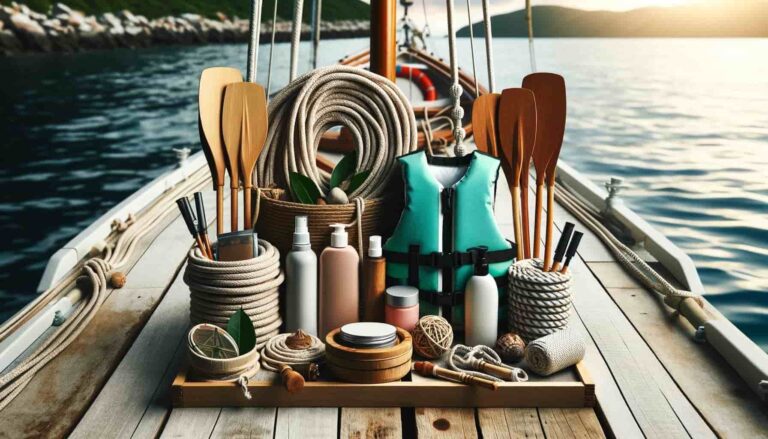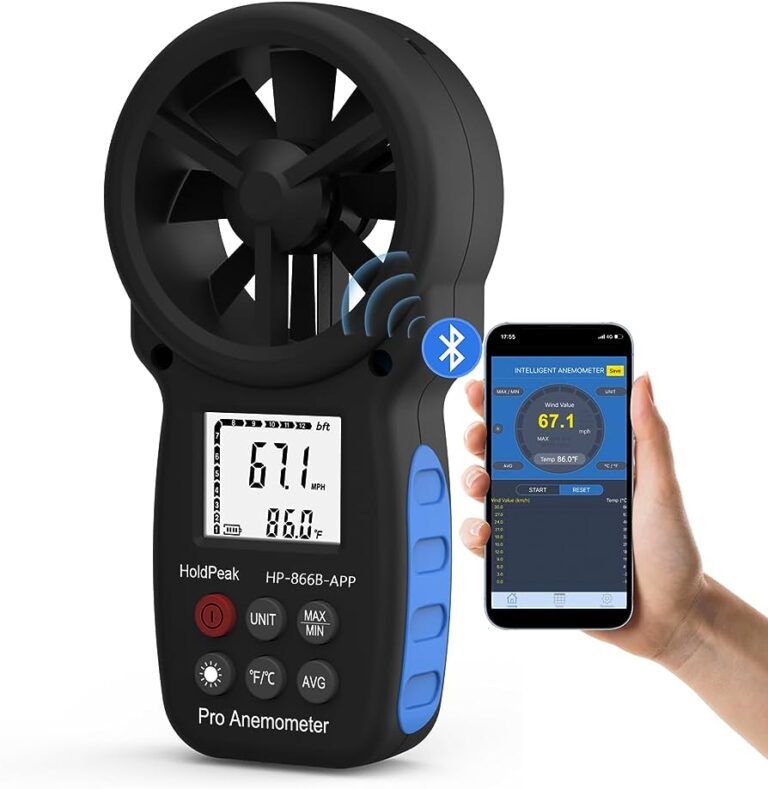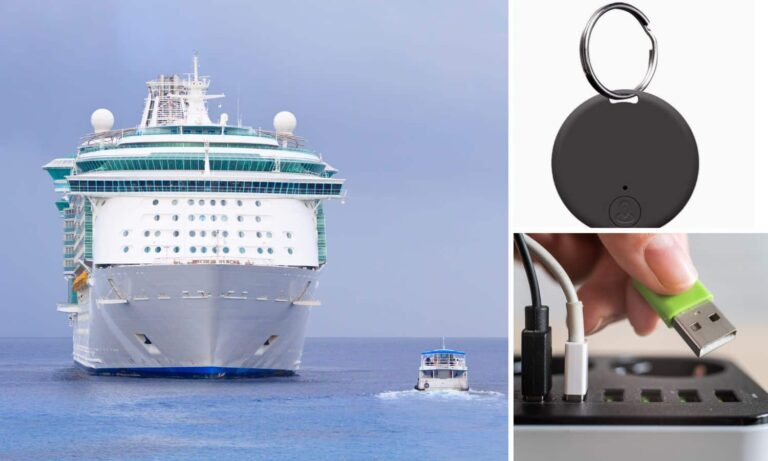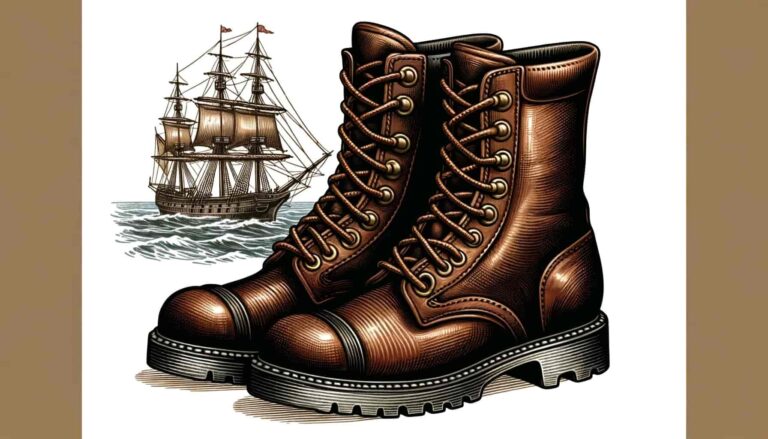Gear Review: Best Sailing Jackets for Different Climates
For a comprehensive gear review of the best sailing jackets to suit different climates, read on. Sailing jackets play a crucial role in providing protection against the elements, and choosing the right one for the conditions you’ll encounter is essential.
Whether you are sailing in cold, windy conditions or in warmer climates, there are jackets specifically designed to keep you comfortable and dry. We have selected a range of top-rated sailing jackets that offer outstanding performance in various weather conditions.
Read on to find the best sailing jacket for your next adventure on the water.
How To Choose The Right Sailing Jacket For Your Climate
Wondering how to choose the perfect sailing jacket for your climate? Check out our gear review featuring the best options for different weather conditions. Stay comfortable and protected on the water with these top picks.
Factors To Consider When Selecting A Sailing Jacket:
When it comes to choosing the right sailing jacket, it’s important to consider a few key factors to ensure you stay comfortable and protected in different climates. Here are some important considerations to keep in mind:
- Material and Durability: Look for a sailing jacket made from high-quality, durable material such as Gore-Tex or nylon. This will ensure that your jacket can withstand the rigors of sailing and provide long-lasting protection.
- Waterproofness and Breathability: A good sailing jacket should be both waterproof and breathable. It should keep you dry in wet conditions while allowing sweat and moisture to escape, keeping you comfortable and dry from the inside as well.
- Insulation and Layering: Depending on the climate you sail in, you may need a jacket with insulation for colder conditions or one that can be layered with other clothing for versatility in varying temperatures.
- Hood and Collar: Look for a sailing jacket with an adjustable, well-fitting hood to keep the rain and wind out. Additionally, a high collar with fleece lining can provide extra warmth and protection against the elements.
- Cuffs and Seals: Consider jackets with adjustable cuffs and seals to keep water from seeping in. These features ensure a snug fit around your wrists or waist, preventing water from entering.
- Pockets and Storage: Having ample pockets and storage options in your sailing jacket is crucial. Look for jackets with multiple pockets, including inner pockets for added convenience and security for your belongings.
- Visibility and Reflectivity: Sailing jackets with reflective details or bright colors can enhance your visibility in low-light conditions, ensuring safety while on the water.
- Fit and Mobility: Choose a sailing jacket that offers a good fit and allows for ease of movement. A comfortable yet functional fit is essential for maneuvering on the boat and performing various tasks.
- Versatility: Consider a sailing jacket that can be used in a range of climates and weather conditions. Some jackets come with detachable layers or hoods, allowing you to adapt to changing circumstances.
- Price and Quality: Finally, it’s important to find a balance between price and quality. While you don’t want to compromise on the durability and features of your sailing jacket, it’s also essential to consider your budget.
By considering these factors, you can select a sailing jacket that suits your specific climate and provides the necessary protection, comfort, and functionality for an enjoyable sailing experience.
Sailing Jackets For Cold Climates
Looking for the best sailing jackets for different climates? Stay warm and comfortable on the water with our gear review of top-rated sailing jackets designed for cold conditions. Explore our recommendations for ultimate protection in any weather.
When it comes to sailing in cold climates, having a high-performance sailing jacket is crucial. These jackets are specifically designed to keep you warm, dry, and protected from the harsh elements you might encounter out at sea. In this gear review, we’ll take a closer look at the best sailing jackets for cold climates, focusing on their insulation and breathability features, as well as their waterproof and windproof technologies.
Review Of High-Performance Sailing Jackets
- 1. High-performance sailing jackets are manufactured using advanced materials and technologies to ensure maximum comfort and protection in cold climates.
- 2. These jackets are built to withstand extreme weather conditions, including strong winds and freezing temperatures, allowing you to sail with confidence.
- 3. They are designed with a durable outer shell that repels water and prevents it from seeping through, keeping you dry even in heavy rain or snow.
- 4. The construction of these jackets includes reinforced seams and waterproof zippers to provide an extra layer of protection against water ingress.
- 5. With their ergonomic design, these jackets allow for freedom of movement, enabling you to navigate your boat with ease.
Insulation And Breathability Features
- 1. Insulation plays a vital role in keeping you warm during chilly sailing trips. High-performance sailing jackets feature advanced insulation materials, such as synthetic fibers or down, which provide excellent thermal efficiency.
- 2. The insulation is strategically placed in key areas, such as the chest, back, and arms, to ensure maximum warmth where you need it the most.
- 3. Breathability is equally important to prevent overheating and keep you comfortable while sailing. These jackets are designed with breathable membranes that allow perspiration vapor to escape, keeping you dry from the inside out.
- 4. Some jackets feature ventilation systems, such as underarm zip vents or mesh-lined pockets, to enhance airflow and regulate body temperature during exertion.
- 5. The combination of insulation and breathability features in these sailing jackets ensures you stay comfortably warm without feeling sweaty or clammy.
Waterproof And Windproof Technologies
- 1. Sailing jackets designed for cold climates incorporate advanced waterproof technologies, such as laminated membranes or coated fabrics, to keep you dry in wet conditions.
- 2. These jackets are tested to withstand significant water pressure, ensuring that no water penetrates the jacket even during heavy rain or rough sea spray.
- 3. Windproof technologies are integrated into the construction of these jackets, using materials with high wind-resistance properties to shield you from chilling winds while sailing.
- 4. Adjustable cuffs, collars, and hoods with built-in face shields provide additional protection against wind and cold air, allowing you to seal out the elements effectively.
- 5. With their combination of waterproof and windproof technologies, these sailing jackets provide the ultimate defense against the harsh conditions encountered in cold climates.
When venturing out into cold climates on your sailing adventures, investing in a high-performance sailing jacket with excellent insulation, breathability, waterproof, and windproof features is a must. These jackets offer superior protection and comfort, allowing you to enjoy your time on the water without worrying about the cold and wet conditions.
Sailing Jackets For Warm Climates
Discover the best sailing jackets for different climates, including warm weather options. Stay comfortable and protected on the water with these top gear recommendations.
When it comes to sailing in warm climates, having the right gear can make all the difference in staying comfortable and protected from the elements. Sailing jackets designed for warm climates are specifically crafted to provide lightweight and breathable options, UV protection and quick-drying materials, as well as ventilation and moisture-wicking properties.
Here, we’ll explore these essential features in more detail:
Lightweight And Breathable Options:
- Choosing a sailing jacket that is lightweight and breathable is crucial for sailing in warm climates. These jackets are made from advanced fabrics that allow air circulation, keeping you cool and preventing overheating.
- The jacket’s lightweight design ensures that you can move freely without feeling restricted, allowing for better maneuverability on the boat.
- Breathable materials also help to wick away moisture and sweat, preventing discomfort and keeping you dry throughout your sailing adventure.
Uv Protection And Quick-Drying Materials:
- Sailing jackets designed for warm climates often come with built-in UV protection. This feature shields your skin from the harmful rays of the sun, reducing the risk of sunburn and long-term damage.
- Look for jackets that have a UPF (Ultraviolet Protection Factor) rating, which indicates the level of UV protection provided by the fabric.
- Quick-drying materials are essential in warm climates, as they allow the jacket to dry rapidly, even when exposed to water or sweat. This feature ensures that the jacket remains lightweight and comfortable throughout your sailing trip.
Ventilation And Moisture-Wicking Properties:
- Ventilation is key when sailing in warm climates, as it helps to regulate body temperature and prevent overheating. Look for jackets that have strategically placed vents, such as underarm or back vents, to allow for maximum airflow.
- Moisture-wicking properties are essential for keeping you dry and comfortable while sailing. These properties help to draw moisture away from your body, ensuring that sweat evaporates quickly, preventing any clammy or sticky sensations.
Choosing a sailing jacket specifically designed for warm climates is essential for a comfortable and enjoyable sailing experience. Opting for lightweight and breathable options, UV protection and quick-drying materials, as well as ventilation and moisture-wicking properties, will ensure that you can fully enjoy your sailing adventure, regardless of the temperature.
Stay cool, protected, and ready to take on the open waters!
Sailing Jackets For Wet And Humid Climates
Discover the best sailing jackets designed to withstand wet and humid climates. Get the gear review for ultimate protection and comfort during your sailing adventures in different weather conditions.
When it comes to sailing in wet and humid climates, having the right gear is crucial to ensure your comfort and safety. Sailing jackets specifically designed for these conditions can make all the difference. Here are some key features to look for when choosing a sailing jacket for wet and humid climates:
Waterproof And Water-Resistant Coatings:
- Look for jackets that are made with waterproof or water-resistant materials to keep you dry in heavy rain or when waves splash over the deck.
- Jackets with waterproof coatings, such as Gore-Tex or similar technologies, offer excellent protection against rain and water penetration.
- Water-resistant coatings, like DWR (Durable Water Repellent), can help to shed water and keep you dry in light showers.
Sealed Seams And Adjustable Hoods:
- Sealed seams are essential to prevent water from seeping through the stitching. Look for jackets with fully taped or sealed seams for maximum waterproofing.
- An adjustable hood is another important feature, allowing you to tighten it during heavy rain or loosen it when the weather clears up.
- Hoods with built-in visors are particularly useful in wet conditions, providing additional protection for your face and eyes.
Evaluating Breathability In Humid Conditions:
- Humid climates can make you sweat, even when it’s raining. Look for jackets that offer breathability to allow moisture to escape and keep you comfortable.
- Jackets with strategically placed vents, such as underarm zippers or mesh-lined pockets, can help to enhance airflow and prevent overheating.
- Fabrics with moisture-wicking properties can also help to keep you dry by quickly evaporating sweat from your skin.
To ensure you find the best sailing jacket for wet and humid climates, consider these features: waterproof or water-resistant coatings, sealed seams, adjustable hoods, and breathability. Investing in a high-quality sailing jacket will help you stay dry, comfortable, and focused on enjoying your sailing adventures, regardless of the weather conditions.
Sailing Jackets For Temperate Climates
Discover the top sailing jackets designed for different climates. Stay protected and comfortable on the water with these gear reviews. Perfect for temperate conditions, these jackets are essential for any sailing adventure.
Versatile Options For Moderate Conditions
- When it comes to sailing in temperate climates, it’s important to have a sailing jacket that can adapt to changing weather conditions. Here are some versatile options to consider:
- 1. Lightweight jackets with removable liners: These jackets are perfect for moderate temperatures as they allow you to easily adjust your insulation level. The removable liners provide an extra layer of warmth when needed, but can be taken out if the weather gets warmer.
- 2. Softshell jackets: Made from breathable and stretchable materials, softshell jackets are designed to provide both protection from the wind and comfort during physical activities. They offer a good balance between warmth and breathability, making them ideal for sailing in moderate climates.
- 3. Convertible jackets: If you’re looking for even more versatility, consider a convertible jacket. These jackets can be transformed into vests by removing the sleeves, giving you the option to adjust your level of coverage based on the weather conditions.
Layering Capabilities And Adjustable Features
- Layering is essential when sailing in temperate climates, as weather conditions can change rapidly. Look for sailing jackets that offer layering capabilities and adjustable features to ensure maximum comfort. Here are some key features to consider:
- 1. Multiple pockets: Look for jackets with ample pockets to store extra layers or other essentials. These pockets should be easily accessible, even when wearing gloves.
- 2. Adjustable cuffs and hems: Jackets with adjustable cuffs and hems allow you to customize the fit, sealing out cold drafts and preventing water from entering.
- 3. Hood with adjustable features: A hood with adjustable features, such as drawstrings or toggles, helps in keeping your head protected from wind and rain. It should be large enough to accommodate a hat or a helmet.
- 4. Pit zips or ventilation panels: Sailing jackets with pit zips or ventilation panels help regulate body temperature by allowing airflow. This feature is especially useful during physical activities or when the weather becomes warmer.
Balancing Waterproof And Breathable Properties
- Finding a sailing jacket that balances waterproof and breathable properties is crucial for comfort during moderate weather conditions. Here’s what to look for:
- 1. Waterproof materials and construction: Opt for jackets made from waterproof fabrics, such as Gore-Tex or similar high-quality materials. Look for jackets with sealed seams and water-resistant zippers to ensure maximum protection against rain or spray.
- 2. Breathable membranes or linings: Along with being waterproof, the jacket should also be breathable. Look for jackets that feature breathable membranes or linings, allowing moisture and sweat to escape while preventing water penetration.
- 3. Ventilation features: Sailing jackets with ventilation features, such as underarm vents or back vents, help in circulating fresh air and preventing overheating. These features are especially beneficial during strenuous activities or when the weather becomes warmer.
Remember, when choosing a sailing jacket for temperate climates, consider versatile options, layering capabilities, and a balance between waterproof and breathable properties. This way, you’ll be well-equipped to handle changing weather conditions while enjoying your time on the water.

Credit: twogetlost.com
Best Sailing Jackets For Tropical Climates
Explore the top sailing jackets specifically designed for tropical climates. These gear reviews offer valuable insights for sailors in different climates.
If you’re planning to sail in tropical climates, it’s crucial to have a sailing jacket that effectively protects you from the sun, keeps you cool, and withstands the unique challenges of saltwater and high humidity. Here are key features to consider when choosing the best sailing jacket for tropical climates:
Lightweight And Quick-Drying Materials:
- Opt for jackets made from lightweight and breathable materials such as nylon or polyester. These fabrics offer a good balance between durability and comfort.
- Look for jackets with quick-drying capabilities to help you stay comfortable even in humid conditions.
- Consider jackets with moisture-wicking properties that efficiently draw sweat away from your body, ensuring you stay dry and cool.
Upf Sun Protection And Ventilation:
- Select jackets with a high Ultraviolet Protection Factor (UPF) rating. This ensures effective sun protection by blocking out harmful UV rays.
- Look for jackets with a good ventilation system, including mesh-lined pockets, underarm vents, and back vents. These features enhance airflow, preventing overheating during long hours under the sun.
Resistant To Mildew And Saltwater Corrosion:
- Choose sailing jackets that are resistant to mildew formation, as tropical climates are often more prone to moisture and humidity.
- Look for jackets with saltwater corrosion resistance. This feature ensures that your jacket stays in good condition even after exposure to saltwater or ocean spray.
Selecting the right sailing jacket for tropical climates is essential to make your sailing experience more enjoyable, comfortable, and safe. Consider the factors mentioned above to find the perfect combination of lightweight materials, sun protection, ventilation, and resistance to mildew and saltwater corrosion.
Sailing Jackets For Arctic And Antarctic Expedition
Discover the top sailing jackets for extreme expeditions in the Arctic and Antarctic. This gear review explores the best options for different climates, ensuring you stay protected in unpredictable conditions.
When it comes to sailing in extreme weather conditions, having the right gear is essential. A reliable and sturdy sailing jacket offers not only protection but also comfort during Arctic and Antarctic expeditions. These jackets are specifically designed to withstand harsh elements and provide insulation against freezing temperatures.
In this section, we will explore the key features that make sailing jackets ideal for Arctic and Antarctic adventures.
Extreme Weather Protection Features:
- Waterproof and windproof materials: The sailing jackets for Arctic and Antarctic expeditions are made with advanced waterproof and windproof fabrics. These materials ensure that you stay dry and shielded from strong gusts of wind.
- Seam-sealed construction: The jackets come with seam-sealed construction, which prevents water from seeping in through the stitching. This feature enhances the overall waterproof capability of the jacket.
- Adjustable hoods: The hoods on these jackets are adjustable, allowing you to tighten them for a snug fit. This feature helps in protecting your head and face from biting cold winds.
- High collar design: The jackets have a high collar design that provides extra protection for your neck and prevents cold air from entering. This feature helps in retaining body heat and keeping you warm.
Insulation And Heat Retention Technologies:
- Thermal linings: Sailing jackets for Arctic and Antarctic expeditions are lined with high-quality thermal materials that trap heat close to the body. This insulation technology ensures that you stay warm even in extremely cold conditions.
- Layering versatility: These jackets are designed to accommodate additional layers of clothing underneath. This feature allows you to adjust your clothing according to the temperature changes during your expedition.
- Adjustable cuffs and hem: Most sailing jackets come with adjustable cuffs and hem to provide a customizable fit. This feature not only helps in heat retention but also prevents cold air from entering the jacket.
Tested Performance In Harsh Conditions:
- Field-tested durability: The sailing jackets undergo rigorous testing under extreme weather conditions to ensure their performance and durability. These jackets are designed to withstand freezing temperatures, heavy rain, and strong winds.
- Breathability: While providing insulation, the jackets also offer breathability to prevent sweat buildup and keep you comfortable during physical activities.
- Mobility and maneuverability: Sailing jackets are designed to facilitate easy movement and flexibility during active sailing. They are constructed with ergonomics in mind, allowing you to maneuver freely without feeling restricted.
A well-designed sailing jacket for Arctic and Antarctic expeditions provides the necessary protection and insulation to face the extreme weather conditions of these regions. With features like extreme weather protection, insulation technologies, and tested performance, these jackets ensure your comfort and safety on the open waters.
So, gear up with the right sailing jacket and embark on unforgettable adventures in the Arctic and Antarctic.
Tips For Maintaining Your Sailing Jacket
Looking to maintain your sailing jacket? Here are some tips for keeping it in top shape. These jackets are ideal for various climates and offer durability and protection.
Cleaning And Storing Recommendations
Maintaining your sailing jacket is crucial to ensure its longevity and optimal performance. Here are some tips on cleaning and storing your jacket to keep it in top condition:
- Read the manufacturer’s guidelines: Before cleaning your sailing jacket, check the care instructions provided by the manufacturer. They will give you specific guidelines for cleaning and storing your jacket, which may vary depending on the materials used.
- Hand washing or machine washing: Most sailing jackets can be either hand washed or machine washed. If you choose to machine wash, make sure to use a delicate cycle and mild detergent. Avoid using bleach or fabric softeners, as they can damage the jacket’s waterproofing.
- Removing stains: Treat stains on your sailing jacket as soon as possible to prevent them from setting. Gently blot the stain with a clean cloth soaked in a mild detergent solution. Avoid scrubbing aggressively, as it can damage the fabric. Rinse the area thoroughly with clean water afterward.
- Drying the jacket: After cleaning, hang the jacket in a well-ventilated area to air dry. Avoid exposing it to direct sunlight or using direct heat sources like radiators, as they can cause the fabric to warp or shrink. If your sailing jacket is particularly dirty, consider using a specialized waterproofing reconditioning product once it’s dry to restore its water repellency.
- Proper storage: When you’re not using your sailing jacket, it’s important to store it correctly to maintain its shape and integrity. Here are a few tips for proper storage:
- Ensure the jacket is completely dry before storing it to prevent mold and mildew growth.
- Store the jacket in a dry and cool location, away from direct sunlight and excessive heat.
- Avoid folding the jacket for extended periods, as it can create creases that may become permanent over time. Instead, hang it on a sturdy hanger to retain its shape.
- If the jacket comes with a stuff sack or a storage bag, use it to protect the jacket from dust and potential damage.
Repairing Small Damages And Prolonging Jacket Lifespan
To maximize the lifespan of your sailing jacket, it’s important to address small damages promptly. Here are some tips for repairing small damages and prolonging the lifespan of your jacket:
- Patch small tears and holes: If you notice any small tears or holes in your sailing jacket, it’s best to patch them as soon as possible. Most sailing jackets come with repair kits or adhesive patches that can be applied to the damaged area to prevent further tearing.
- Seam resealing: Over time, the seam tape on your sailing jacket may start to peel or become less effective. Resealing the seams will help maintain the jacket’s waterproofing. Use a specialized seam sealer recommended by the manufacturer and carefully follow the instructions for application.
- Maintain the zippers: Smoothly functioning zippers are crucial for a sailing jacket. To ensure they work properly, regularly clean and lubricate them with a silicone-based zipper lubricant. This will prevent them from jamming or getting stuck.
- Inspect for wear and tear: Regularly inspect your sailing jacket for signs of wear and tear. Check the cuffs, collar, and other high-stress areas for any fraying or weakening. Addressing these issues in the early stages can help prevent major damages and extend the lifespan of your jacket.
Ensuring Optimal Performance In All Climates
A high-quality sailing jacket should perform well in a variety of climates. Here are some tips to ensure optimal performance in different weather conditions:
- Layering: Layering your clothing is key to adapt to changing weather conditions. Underneath your sailing jacket, wear moisture-wicking base layers to keep your body dry and insulated. Add mid-layers, such as fleeces or insulated jackets, for extra warmth when sailing in colder climates.
- Adjustable features: Look for a sailing jacket with adjustable cuffs, hem, and hood. These features allow you to customize the fit and seal out cold air, rain, or spray. Make sure to tighten them when sailing in challenging weather conditions and loosen them when conditions improve.
- Breathability and ventilation: Sailing jackets with breathable fabrics and ventilation systems help regulate your body temperature and prevent overheating. Look for jackets with mesh-lined pockets or underarm vents that allow airflow while maintaining waterproofness.
- Pay attention to the hood: A well-designed hood is essential for protecting your head and face from wind and rain. Ensure your sailing jacket has an adjustable hood that fits snugly and has a sturdy peak or visor to shield your eyes from water and sunlight.
- Consider climate-specific features: If you often sail in extreme climates, look for specialized features. For cold climates, consider jackets with insulation and fleece-lined collars. In warmer climates, prioritize lightweight and quick-drying materials with UPF protection.
Remember, following the manufacturer’s guidelines and properly maintaining your sailing jacket will significantly enhance its durability and keep you comfortable and protected during your sailing adventures.
Frequently Asked Questions On Gear Review: Best Sailing Jackets For Different Climates
Who Makes The Best Sailing Clothing?
Gill, Helly Hansen, Musto, and Zhik are renowned brands that make top-notch sailing clothing.
Are Sailing Jackets Good For Winter?
Yes, sailing jackets are good for winter because they offer protection from the cold weather.
What Is The Best Offshore Foul-Weather Gear?
The best offshore foul-weather gear depends on personal preferences and needs. It’s essential to choose high-quality, waterproof, and durable clothing suitable for your specific offshore activities. Consider reputable brands like Gill, Helly Hansen, and Musto for reliable options.
What Is The Best Wet Weather Gear For Sailing?
The best wet weather gear for sailing is waterproof jackets and pants, along with rubber boots.
Conclusion
When choosing a sailing jacket, it is crucial to consider the climate you’ll be sailing in. The right jacket can provide protection against the elements and keep you comfortable throughout your journey. After reviewing various options, it is evident that the best sailing jackets for different climates excel in their ability to shield you from wind, rain, and extreme temperatures.
These jackets are designed with high-quality materials and innovative features to ensure your safety and comfort on the water. Whether you’re sailing in cold, windy conditions or hot, humid climates, there is a jacket that suits your needs. Don’t overlook the importance of investing in the right sailing jacket, as it can greatly enhance your sailing experience.
So, before your next adventure, make sure to choose a jacket that is suitable for the climate you’ll be sailing in and enjoy your time on the water to the fullest.








